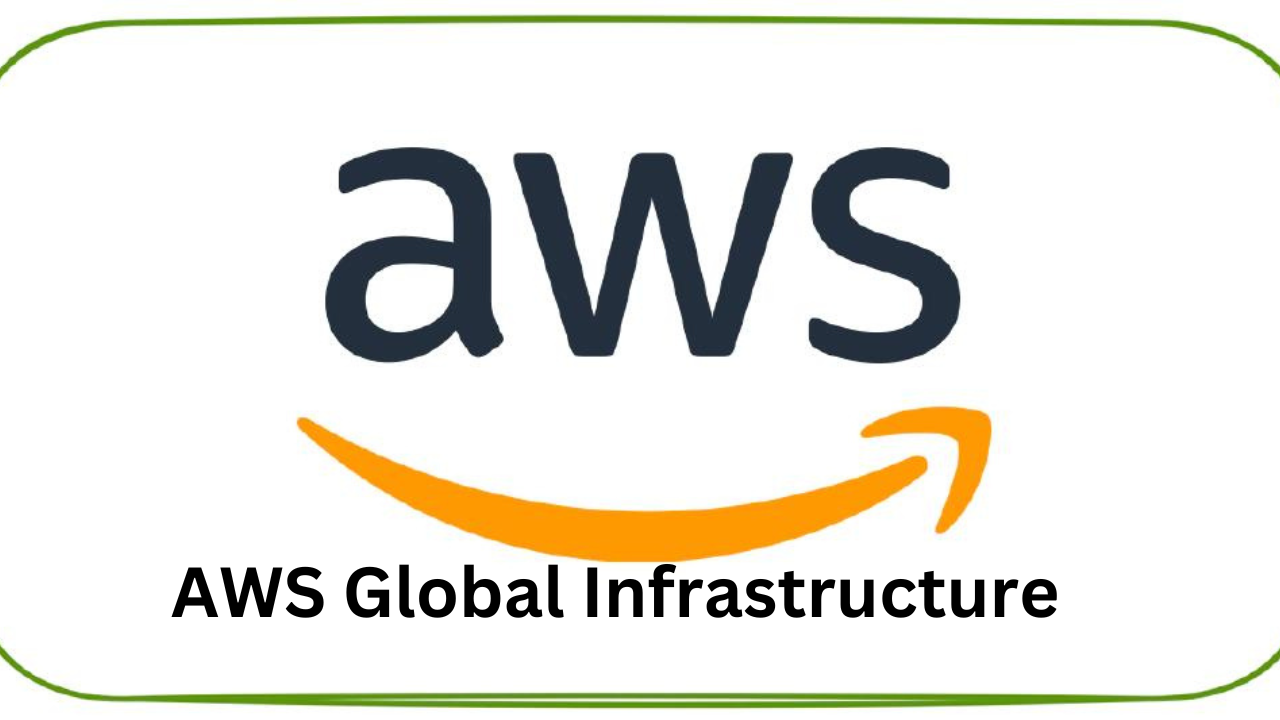Exploring AWS Global Infrastructure
 priyadarshi ranjan
priyadarshi ranjan
As organizations around the world move towards cloud computing, one of the biggest names leading this shift is Amazon Web Services (AWS). What makes AWS the top choice for businesses of all sizes is its vast and highly efficient global infrastructure. This infrastructure is designed to meet the needs of a wide range of applications, from small-scale startups to large enterprises, offering availability, reliability, and performance at a global scale. In this blog, we’ll dive deep into the components of AWS's global infrastructure and understand why it is so critical for businesses today.
What is AWS Global Infrastructure?
The AWS global infrastructure is a network of regions, availability zones (AZs), edge locations, and local zones that work together to provide reliable and scalable cloud services. AWS strategically places its infrastructure in different geographic locations to ensure data redundancy, low latency, and disaster recovery across the globe.
Let’s break down the key components:

1. AWS Regions
Regions are physical locations where AWS clusters its data centers. Each region contains multiple data centers, known as Availability Zones (AZs). AWS offers a wide range of services in each region, such as computing, storage, and networking services.
Real-Life Example: Suppose a multinational company has a customer base spread across North America and Europe. To provide faster response times and comply with data residency laws, they may choose to deploy their application in the US East (N. Virginia) Region and the EU (Frankfurt) Region. This ensures that users in the US and Europe can access their application with minimal latency while ensuring that customer data in Europe remains within EU borders.

2. Availability Zones (AZs)
An Availability Zone is a distinct data center in a region, isolated from other AZs, ensuring that failure in one zone won’t affect another. Each region has at least two or more AZs, and businesses can distribute applications across multiple AZs to improve fault tolerance.
Real-Life Example: Consider a video streaming service that wants to minimize downtime and avoid data loss. By hosting their application in multiple AZs within a region (for instance, using US West (Oregon) with three AZs), they can ensure that even if one data center goes down, the others continue to operate, providing uninterrupted service to their users.
3. AWS Edge Locations and Content Delivery (CDN)
Edge locations are part of AWS’s global content delivery network (CDN) known as Amazon CloudFront. These locations are responsible for caching content and delivering it to users at high speeds by placing it closer to the end-users. This reduces latency for globally distributed users.
Real-Life Example: A global e-commerce platform with customers from all over the world can leverage CloudFront to deliver product images, videos, and other content quickly. By caching content in Edge Locations like Tokyo, Sydney, and Mumbai, customers in those regions experience fast-loading web pages, leading to a better user experience.
4. AWS Local Zones
Local Zones are extensions of AWS regions, allowing AWS services to be run closer to end-users who require single-digit millisecond latency for specific use cases like gaming or video processing.
Real-Life Example: A gaming company based in Los Angeles might use the AWS Local Zone in Los Angeles to provide ultra-low latency for its users on the West Coast. This ensures that players experience minimal lag, which is crucial for online multiplayer games.

5. AWS Outposts
AWS Outposts extends AWS infrastructure, services, APIs, and tools to virtually any on-premises facility. This is ideal for businesses that need the AWS experience on-premises due to low-latency or local data processing needs but still want to seamlessly integrate with AWS regions.
Real-Life Example: Consider a financial institution in India that requires real-time processing of sensitive transactions but must comply with stringent data residency regulations. They could deploy AWS Outposts in their data center, ensuring data remains on-site while still using AWS services for scalability and security.
Why Does AWS Global Infrastructure Matter?
AWS's global infrastructure provides several key advantages that help businesses scale and maintain availability:
Low Latency: With edge locations and multiple regions, AWS reduces the time it takes for users to interact with applications, which is crucial for real-time services like gaming, streaming, and e-commerce.
Data Sovereignty: Businesses with strict data residency requirements can choose specific regions to store their data, ensuring compliance with laws like GDPR.
Disaster Recovery: By utilizing multiple regions and AZs, businesses can easily set up disaster recovery strategies to ensure that their data and services remain accessible in the event of a regional failure.
Scalability: AWS's infrastructure allows businesses to scale up their applications and services globally without worrying about hardware provisioning or infrastructure management.
Real-Life Example of AWS Global Infrastructure in Action
Netflix: Netflix is one of the largest streaming platforms in the world, serving millions of users across different countries. To handle such a massive audience, Netflix relies on AWS global infrastructure. By leveraging multiple AWS regions and AZs, Netflix ensures that users can stream content without interruption, even during peak hours. They also use Amazon CloudFront to deliver content from the nearest edge locations, ensuring a smooth and buffer-free streaming experience regardless of the user's location.
Netflix also uses AWS Regions for backup and disaster recovery purposes. In case of failure in one region, traffic can be rerouted to another region to keep the service running, ensuring high availability.
Conclusion
The AWS global infrastructure offers unparalleled flexibility, scalability, and reliability to businesses of all sizes. Whether you are a small startup or a global enterprise, AWS's extensive network of regions, availability zones, edge locations, and local zones ensures that your applications remain available and responsive to users around the world.
By providing solutions for low latency, data residency, disaster recovery, and more, AWS enables businesses to scale globally without worrying about the underlying infrastructure. The ability to deploy applications closer to users, maintain high availability across multiple regions, and comply with regional regulations makes AWS a go-to platform for cloud computing.
As the cloud continues to evolve, AWS's global infrastructure will remain at the forefront, empowering businesses to innovate and expand while maintaining operational excellence.
Connect and Follow Me on Socials Network
Subscribe to my newsletter
Read articles from priyadarshi ranjan directly inside your inbox. Subscribe to the newsletter, and don't miss out.
Written by

priyadarshi ranjan
priyadarshi ranjan
Greetings! 👋 I'm Priyadarshi Ranjan, a dedicated DevOps Engineer embarking on an enriching journey. Join me as I delve into the dynamic realms of cloud computing and DevOps through insightful blogs and updates. 🛠️ My focus? Harnessing AWS services, optimizing CI/CD pipelines, and mastering infrastructure as code. Whether you're peers, interns, or curious learners, let's thrive together in the vibrant DevOps ecosystem. 🌐 Connect with me for engaging discussions, shared insights, and mutual growth opportunities. Let's embrace the learning curve and excel in the dynamic realm of AWS and DevOps technology!